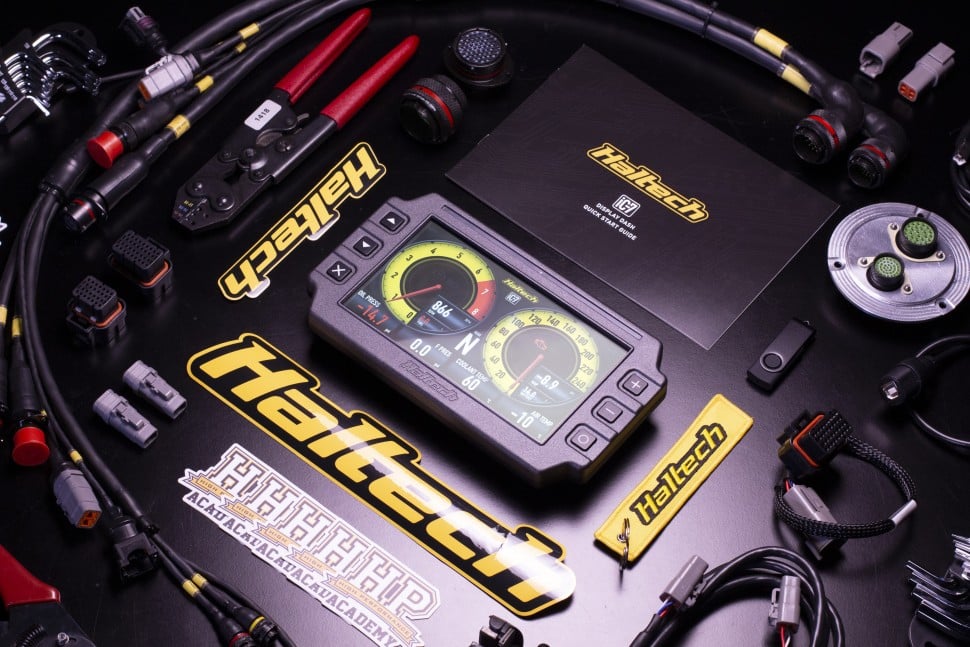| 00:00 |
Front canards, also known as dive planes, are an aerodynamic device that we can use when we need additional forwards aerobalance on the car.
|
| 00:08 |
Ideally, we want to get as much load as we can out of the front splitter and then only need canards for fine tuning.
|
| 00:14 |
But with that said, there are plenty of rulesets where we're front limited and need to lean heavily on the canards.
|
| 00:20 |
Canards differ from front splitters in their characteristics quite a lot, and this is a result of front splitters being in ground effect, while canards aren't so much.
|
| 00:29 |
Front splitters are usually extremely drag efficient and can generate huge amounts of load.
|
| 00:34 |
Canards generate less load per unit area and more drag as they don't have ground effect there to help them out.
|
| 00:41 |
Front splitters are quite ride sensitive as a result of ground effect, canards are not.
|
| 00:46 |
These are key factors to consider when selecting or designing canards for a car.
|
| 00:51 |
Canard load is usually dictated by two things, size and overall angle of attack.
|
| 00:57 |
They're usually sitting in air that has been upwashed from the splitter below, and they always have a vortex rotating around their free tip that keeps the air attached on them for longer than we'd expect on a conventional wing or splitter.
|
| 01:09 |
As a result, the angle of attack on canards can typically be much higher than you'd think and the flow will remain attached.
|
| 01:17 |
However, running this higher angle of attack means that the pressure differential on the canard will be acting with a more rearwards facing surface.
|
| 01:24 |
As a result, we get quite a lot of drag from canards, especially big ones at high angles of attack.
|
| 01:31 |
Generally speaking, the more downforce we gain from front canards, the worse the rear will perform.
|
| 01:36 |
This is for a few reasons.
|
| 01:38 |
The front canard will create upwash behind it, and this will drag some of the dirty air off the front wheel up with it.
|
| 01:44 |
This air inevitably interacts with the rear wing, feeding low energy air into the front of the rear wing, which consequently hurts rear wing performance.
|
| 01:53 |
The upwash from the canard also reduces the effective angle of attack of the rear wing, even though it's quite a long way downstream, and this will depower the wing.
|
| 02:02 |
The canard itself and the vortex shed off the canard will introduce loss to the flow, which will travel downstream and cause a drop in performance of any downstream aero device.
|
| 02:13 |
When designing a canard, we want the leading edge to be close to align with the flow.
|
| 02:17 |
If anything, we actually want it with the flow slightly upwashing naturally towards the leading edge.
|
| 02:23 |
As typically canards are made from single skin carbon or aluminium construction, so they don't have nice rounded and profiled leading edges.
|
| 02:32 |
Note that I said aligned with the flow, not the horizontal plane.
|
| 02:36 |
In reality, this usually means a very slight angle down on the leading edge, around 5 degrees.
|
| 02:41 |
This is because of the upwash of the front splitter.
|
| 02:44 |
From this point, there should be a progressive upwards curvature.
|
| 02:48 |
Ideally, we'd target a leading edge to trailing edge rise of approximately 100mm for every 300mm of length.
|
| 02:55 |
This is by no means a hard rule, but it puts you in the ballpark.
|
| 02:58 |
If we had canards about 250mm above the splitter at their lowest point, that's a decent place to start.
|
| 03:06 |
Canards can also often benefit from an outer end detail, whether that's an upturned flick at the end, or a small, say 20mm tall end plate on the top surface only.
|
| 03:16 |
This will harness the outwash generated by the front bumper on the car, and power up the canard by converting some of that outwash into upwash, resulting in increased downforce.
|
| 03:26 |
Ok, let's wrap up this module by going over the main points covered.
|
| 03:30 |
Front canards or dive planes are used to fine tune forward aero balance, complementing the front splitter.
|
| 03:36 |
While splitters generate significant downforce efficiently due to ground effect, canards generate less load per unit area, and more drag.
|
| 03:44 |
They don't benefit as much from ground effect.
|
| 03:47 |
Canards are less ride sensitive and can operate at higher angles of attack due to vortex formation around their free tip, although this leads to increased drag.
|
| 03:56 |
They can negatively impact rear wing performance by introducing upwash and dirty air into the flow, as well as reducing the rear wing's effective angle of attack.
|
| 04:05 |
Properly designed canards align with the flow at their leading edge, feature slight upward curvature, and benefit from outer end details to increase downforce.
|





